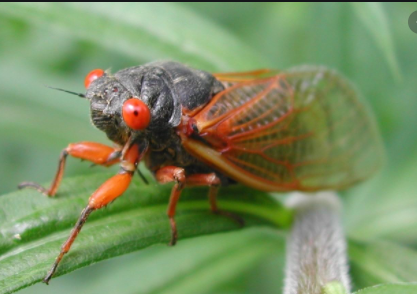Cicadas Maryland
Morningside Maryland Staff : Cicadas are responsible for an extraordinary phenomenon that occurs every 13 or 17 years for those who live in parts of the eastern United States. You will see billions of cicadas in Maryland soon if you haven’t already, and they won’t go unnoticed. These giant insects are known for their ear-numbing sounds that they produce by flexing their tymbals. These sounds are amplified because of their hollow abdomens. More on that later, but you must be wondering what makes them break their 17-year long hiatus underground. We will tell you that and more, so let’s go!( Read also : Vaccine Lottery Maryland- All That You Need To Know About It )
Cicadas Maryland
Cicadas have more than 3000 species. These 17-year periodical cicadas that come to Maryland are called Brood X. This group consists of three species; Magicicada septendecim, Magicicada cassini, and Magicicada septendecula. These cicadas, in particular, are a subject of great amusement for scientists. Their unusually long life cycle still escapes their understanding, although some think this delayed development was to adapt to the ice ages. Whatever it may be, we must begin by discussing this unusual cicada’s life cycle in Maryland.
Their Intriguing Life Cycle
These species of cicadas spend over 90% of their lifetime under the ground. How do they survive there? Well, their diet consists of feeding on nutrient-rich fluid from the roots of plants and trees. This fluid is called sap. Cicada eggs look like grains of rice, which the female deposits in trees. The young insect feeds on sap that was exposed by the groove made for the egg. It starts to look like translucent termites. After the insect is ready to leave its tree limb, it jumps off and finds roots to feed on. It will also begin to dig its underground home for the next 13-17 years at this stage. It is when they come out of the ground to look for mates that we see them. The male adult cicadas, called imagoes, find mates using their loud call (the sound can reach 90 decibels).( Read also : Maryland Mask Rules)
Periodical Cicada Broods of Maryland
Source: U.S. Forest Service
These periodical cicada-mating festivals are a spectacle of their own. The cicadas are desperately rushing to look for mates while being attacked by their many predators. Birds, copperhead snakes, and squirrels are some of the beings that love to gorge on these protein-rich insects. Adult cicadas live only for a short period of two to four weeks after coming out of hibernation. It’s life, death, and romance all at once. The Cicadas and their brood patterns in Maryland in 2021 are explained via a map curated by the U.S. Forest Service. ( Read also : Sports Betting Bill Of Maryland )
Should You Be Worried?
As expected, there is a lot of anticipation and uncertainty among Marylanders that comes with a cicada wave of this size. They are worried about their plants and gardens. One way to tackle these insects is to prepare yourself well in advance. Read up about them on the internet and what all harm they can cause. They don’t do much damage to humans or pets. Instead, they probably help the environment by loosening the soil by digging their burrows. But prevention is better than cure. So you can cover your small trees and shrubs with netting that has a mesh size of one centimeter or less. On the whole, there is not much to worry about, and so you should instead enjoy this unique natural phenomenon!








